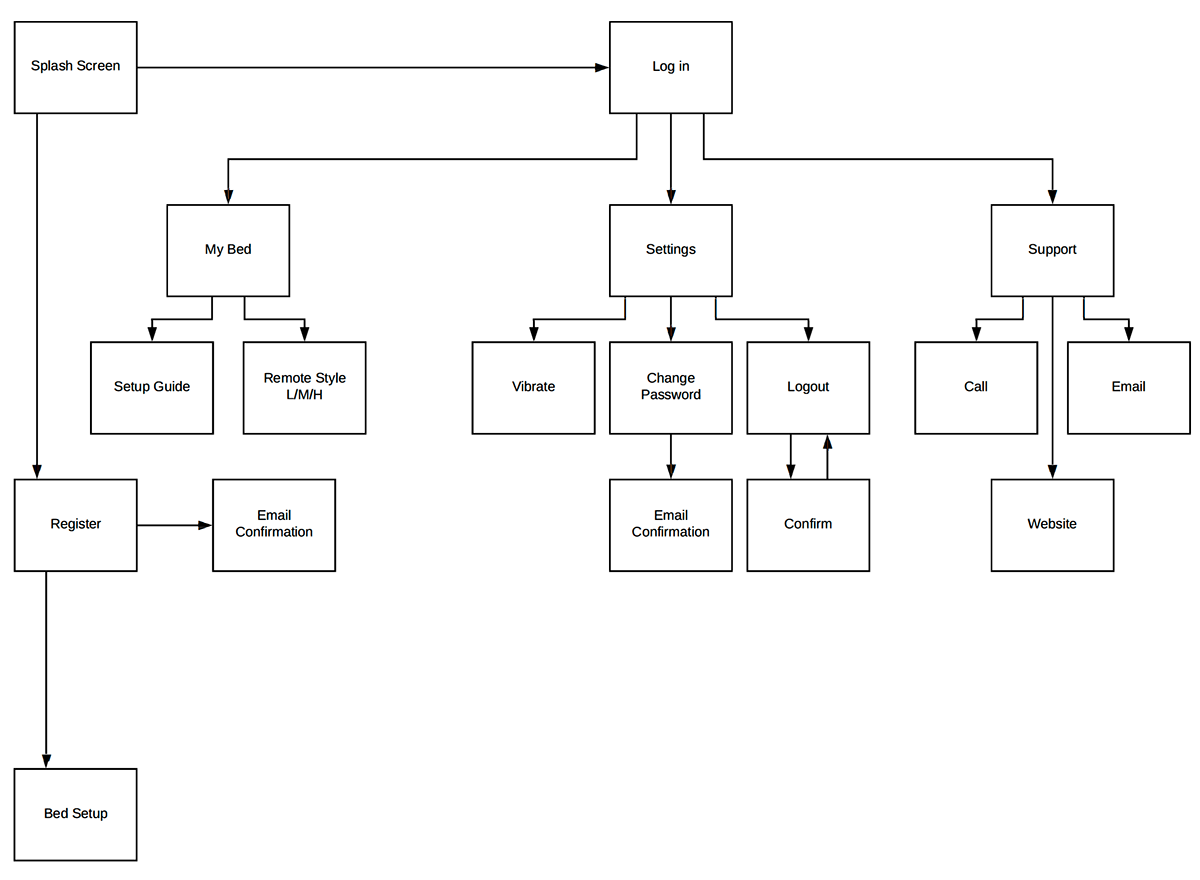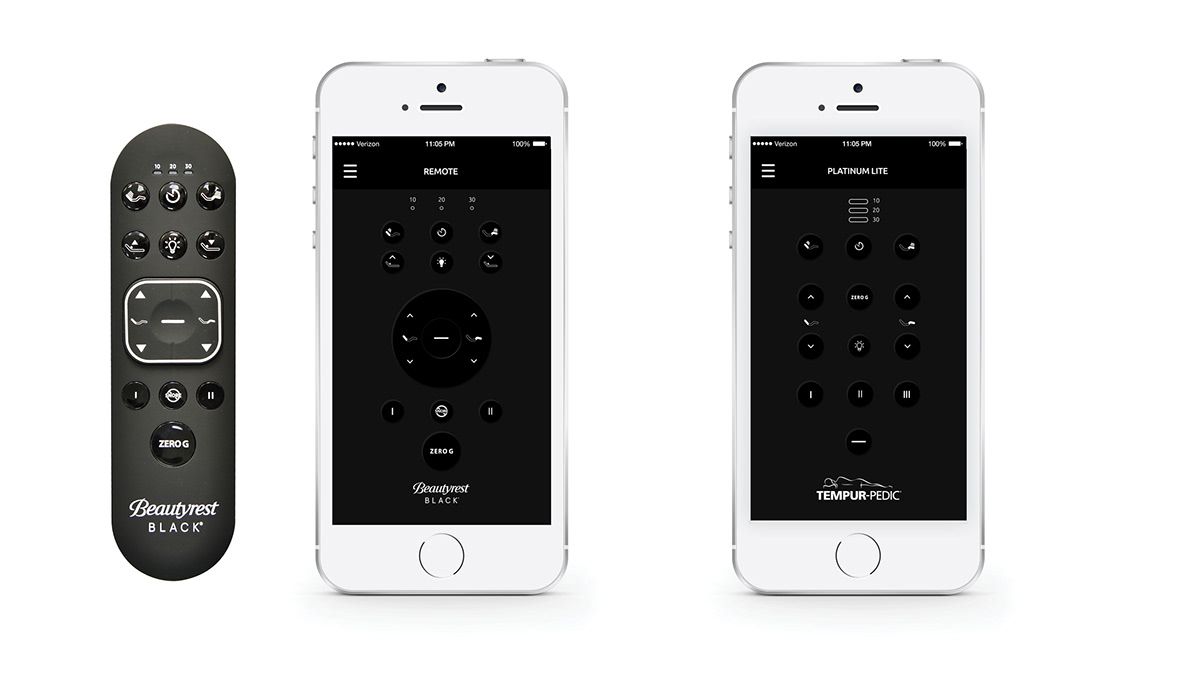"Honey, where's the remote?"
Solving the age-old problem of losing a remote, only this time for your adjustable bed. When at Ergomotion Inc. I was tasked with designing the experience for remote application, to enable users to adjust their bed using their phone. In addition, I had to design it to support offering it as a solution to the partnering mattress brands, namely, Tempuredic, Restonic and Beautyrest.
- User Personas
- Information Architecture & User flows
- Wireframing & Rapid Prototyping
- Ux / Ui Design
- User Testing
- Information Architecture & User flows
- Wireframing & Rapid Prototyping
- Ux / Ui Design
- User Testing

Who am I designing for?
I stared the project, trying to understand the point of view of the person who would be using this product. Turns out, misplacing a remote to any device, is not that uncommon a problem. However, when in a bed, usually a user would take their phone with them to it.
I mapped two proto-personas, who represent simple prototype of the person using this product. In addition, I created user and job stories to help frame the ideation phase of the project.

User Story:
"As a retired person, I want to have accessibility to everything without losing my mind over it."
Job Story:
"When I am in bed, I hate having to look for the remote for my bed to adjust the my reading/lounging/sleeping position."
Problem:
Jane & Bob want an easy accessible way to adjust the position of their bed to get a comfortable and good night's sleep.
Hypothesis:
We believe that we can build a mobile app / solution that helps users access their bed's remote using their phones, using WiFi technology. In addition, we can build it as a white-labeled (supplier) product that helps our business partners offer it to their customers with customized branding and remotes interfaces.
What tasks does the user need to complete?
Based on the frameworks, I started sketching out expected tasks Jane and Bob would want to accomplish to make the product successful. These tasks allowed a visual interpretation of the flow, which was iterated based on talking to engineers developing the syncing of the bed with the phone.




Is the experience intuitive?
Besides the two tasks outlined above, the app had to offer a little more information from a product (bed) point of view, such as Warranty Registration and Customer Service. I collected all the information needed, and conducted a simple card sorting exercise with the product team. This exercise turned out to be very helpful to define the Information Architecture of the app.

This exercise was followed by creating hi-fi wireframes for the product and a rapid prototype to test with identified users. Based on the results of the usability testing, I iterated the designs and worked with the engineers to make the experience as seamless as possible.











Click here for a rapid Prototype I created for the Scott Living + Restonic Partnership.
How does the physical remote match the remote in the app?
Since this mobile application was going to be offered and supplied to business partners as a value add to their customers, from a UI perspective, it posed a challenge for creating several and different remote interfaces that matched the physical remotes offered to the user.
I worked with the Industrial Designer to identify these remotes, and created interfaces to match the mental models of the users.


What did I learn?
In conclusion, I learned that there is customer/user delight in solving the smallest of her/his problems. Although this solution does not make a physical remote obsolete, it does address the occasional questions of "Honey, where's the remote?", at least in the bedroom.

Thank you.
-------------